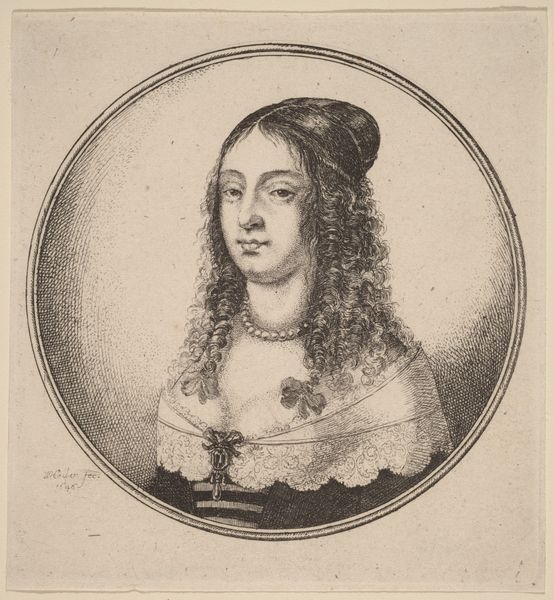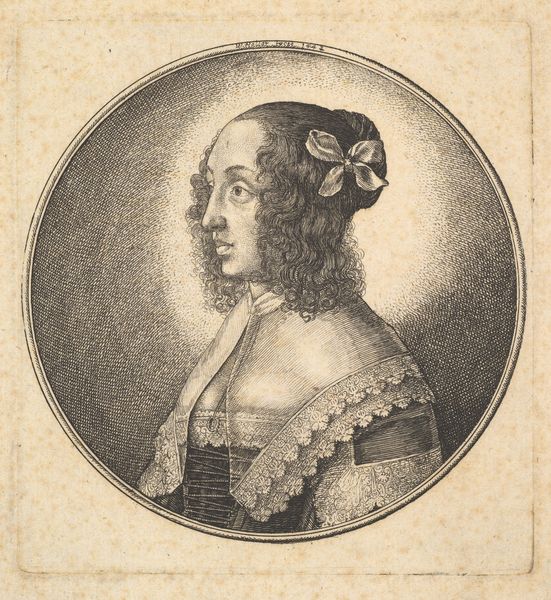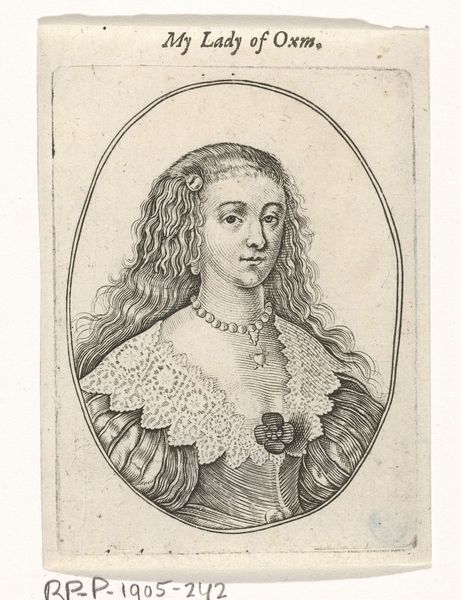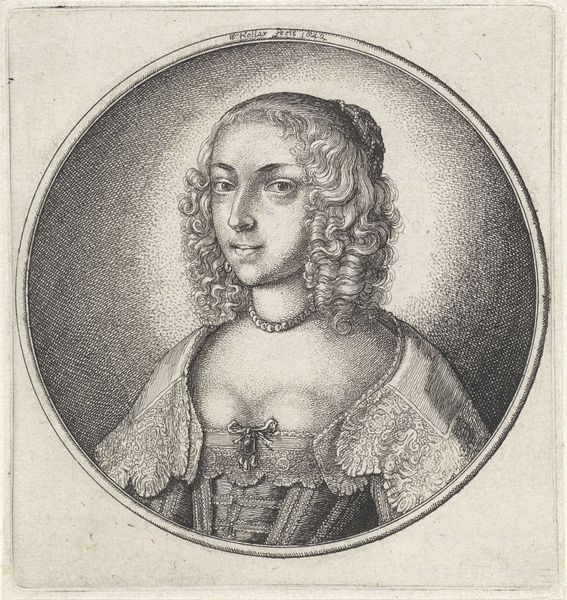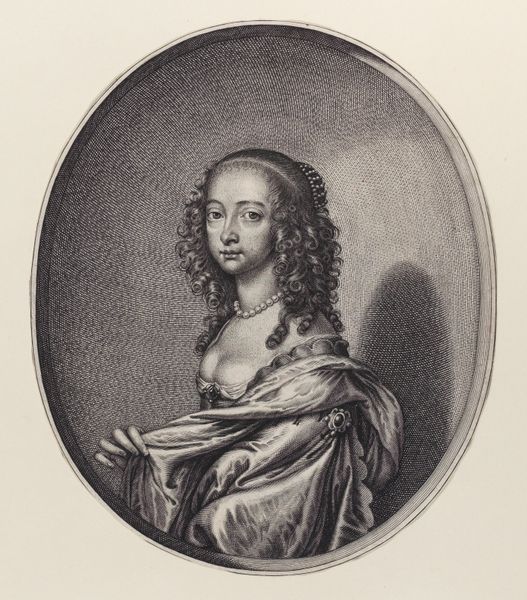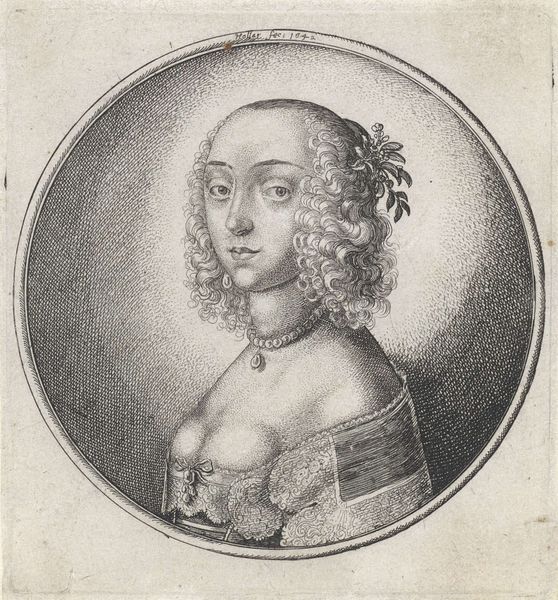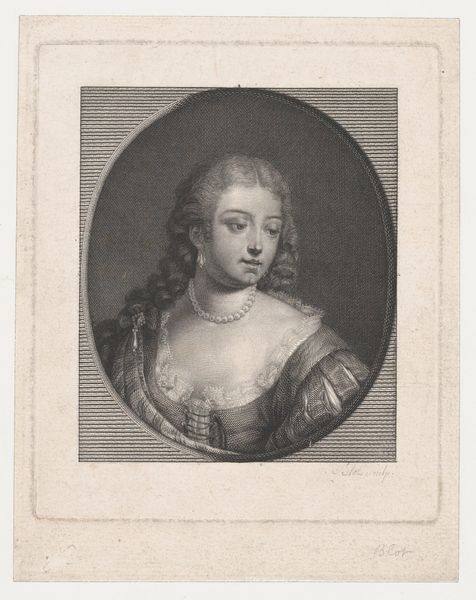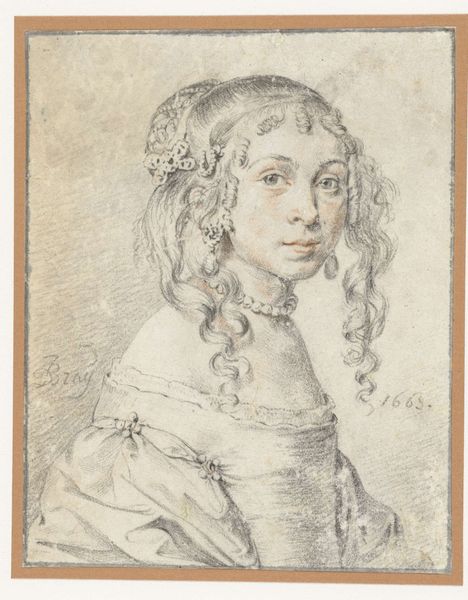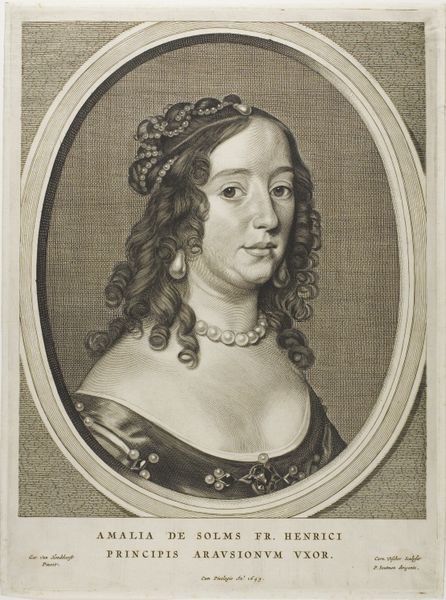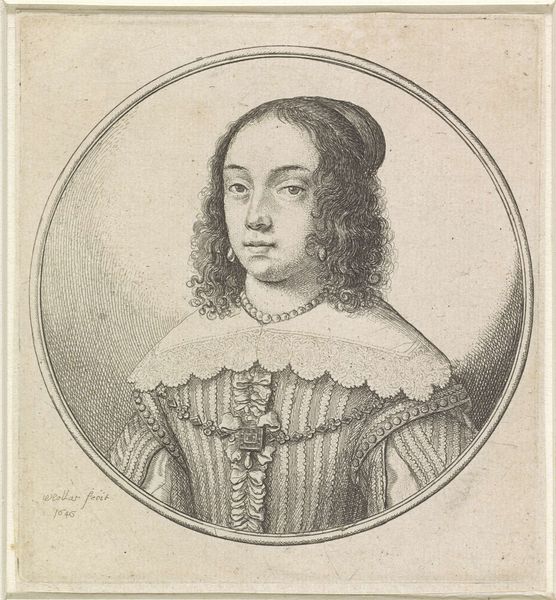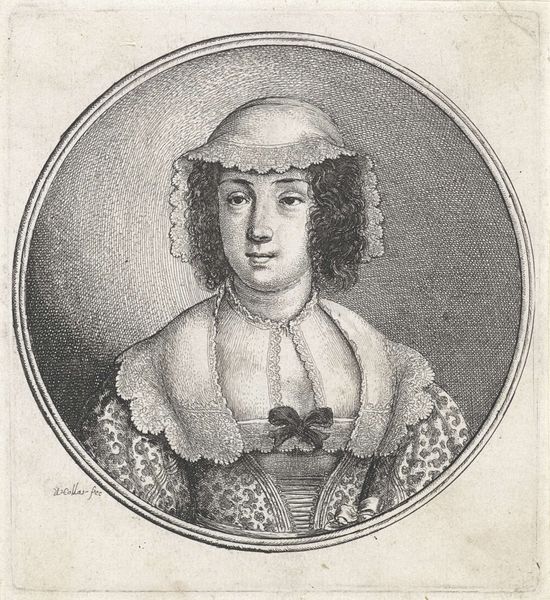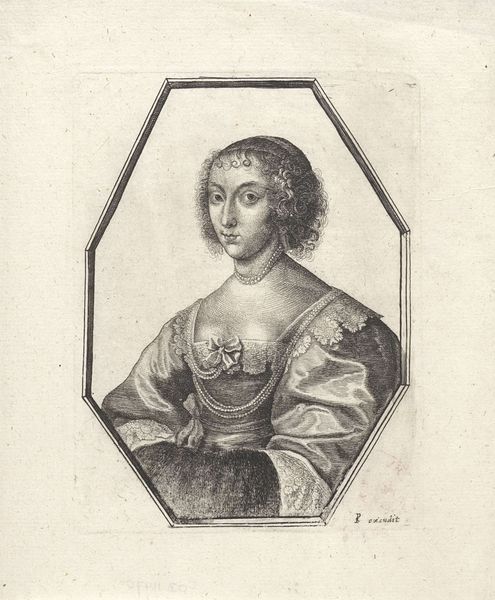
print, etching, engraving
#
portrait
#
baroque
# print
#
etching
#
old engraving style
#
engraving
Dimensions: height 103 mm, width 95 mm
Copyright: Rijks Museum: Open Domain
Editor: So, here we have "Vrouw met laag decolleté en parelketting" - that's "Woman with a low neckline and pearl necklace" – an etching and engraving by Wenceslaus Hollar, dated 1646. What strikes me most is the circular frame. It feels both elegant and confining, almost like looking at a specimen. What’s your take on this piece? Curator: The frame certainly speaks to a very specific context: the rise of print culture and its democratization of portraiture. Consider, for a moment, who could afford painted portraits at this time. Now, how does printmaking shift that power dynamic? This image provided wider access, but also standardized representation. Does this change your perspective on it at all? Editor: That’s fascinating. It makes me think about how this image might have been circulated and consumed. Almost like an early form of celebrity photo. Would this kind of image have been seen as a status symbol, or something else entirely? Curator: Likely both. Ownership denoted a certain level of aspiration or perhaps even affiliation with the sitter, real or idealized. But it’s also crucial to recognize that the subject is actively constructed. Note the low neckline and elaborate pearl necklace— these elements conform to, but also propagate, very specific standards of beauty and desirability in that historical context. How much choice do you think the sitter really had? Editor: That's a really good point; probably not a ton! It makes me think about the agency involved, and how our own perceptions are shaped by those past social codes even now. Curator: Exactly. So the piece isn't simply a neutral depiction. It's an active participant in a social discourse that privileges certain images and ideals over others, then and perhaps even now. Thanks, this helps to highlight why it is relevant even today! Editor: Wow, thinking about the print’s role in constructing and circulating these beauty ideals has definitely changed how I see it! It seems like an everyday print holds a mirror up to so much more.
Comments
No comments
Be the first to comment and join the conversation on the ultimate creative platform.
